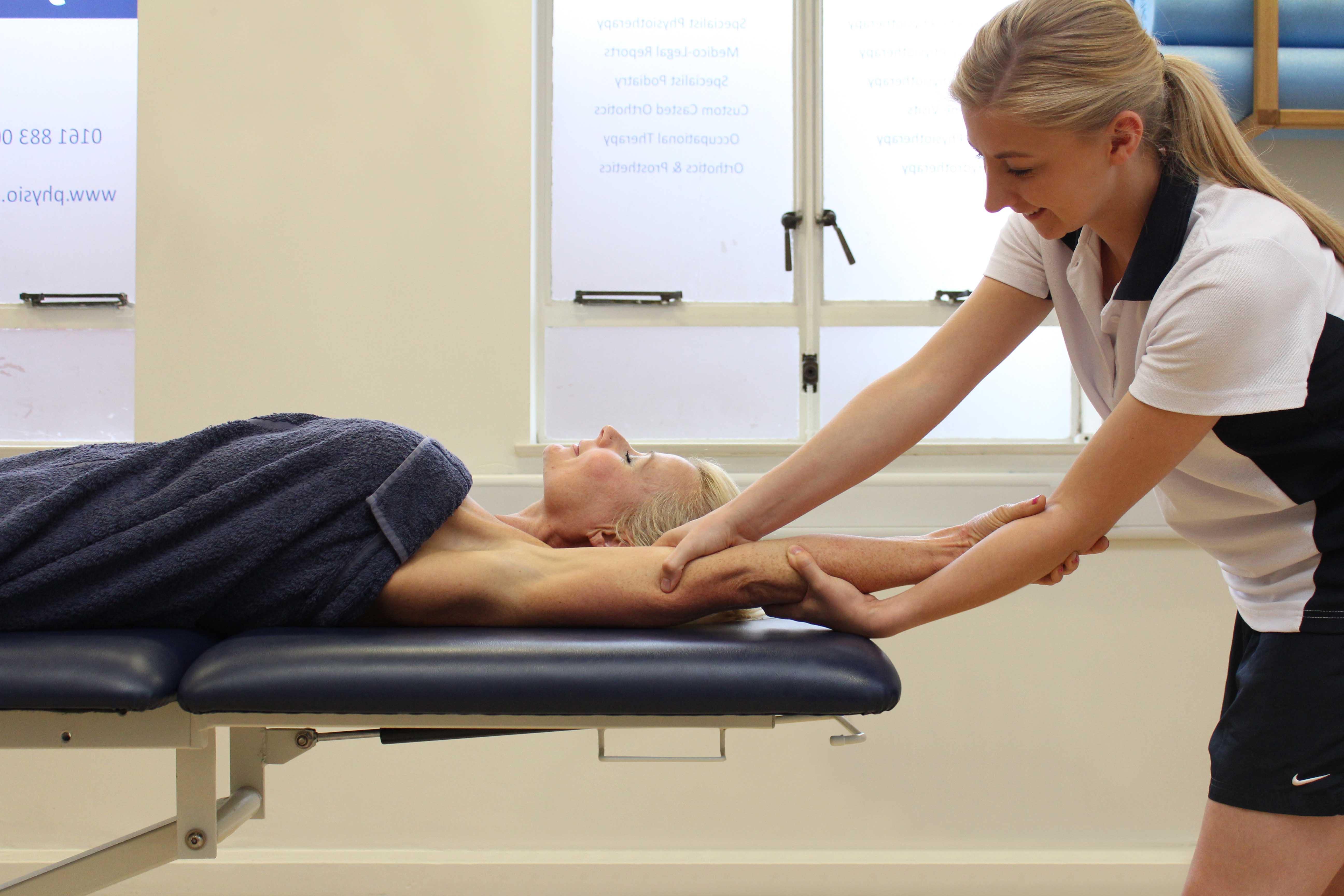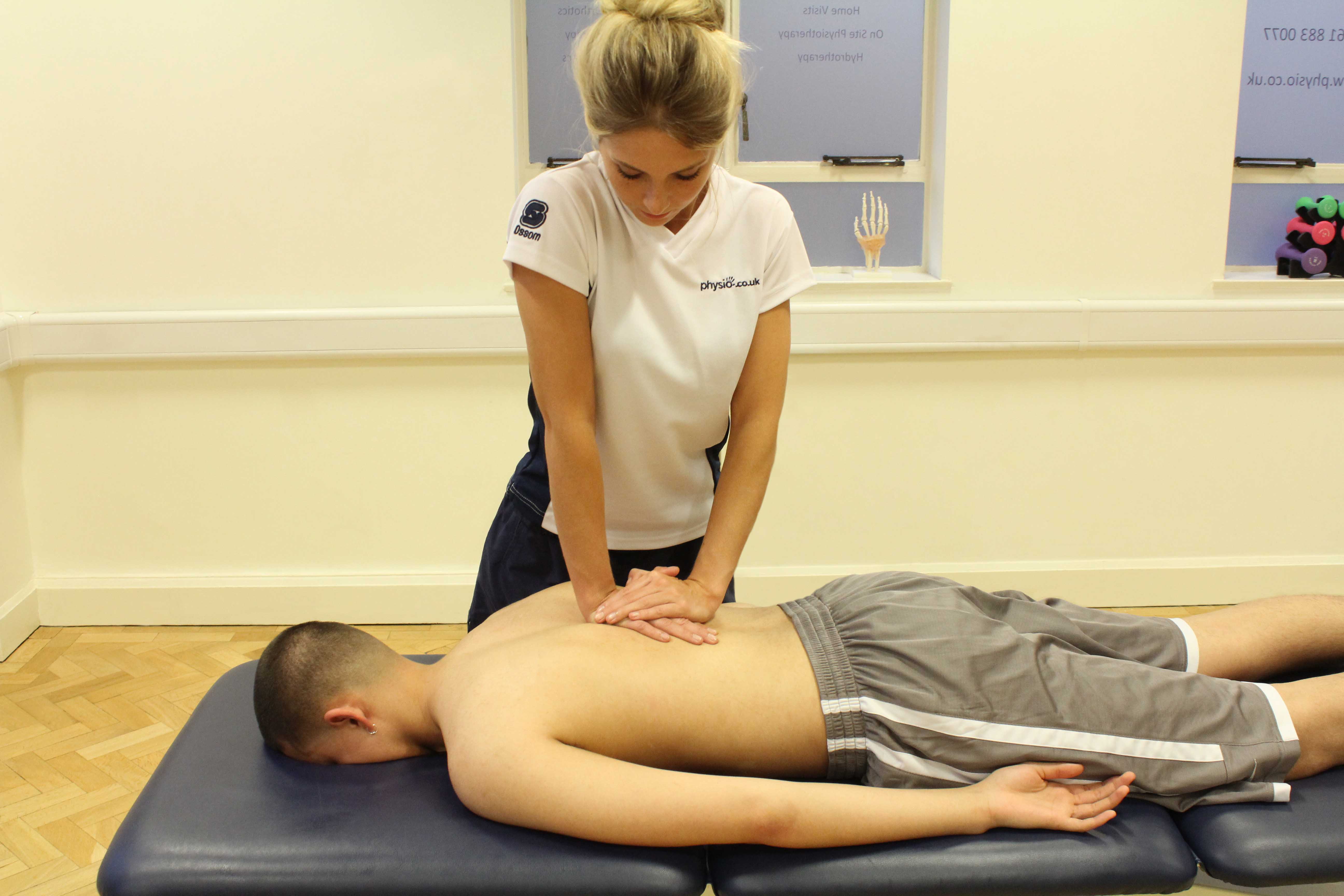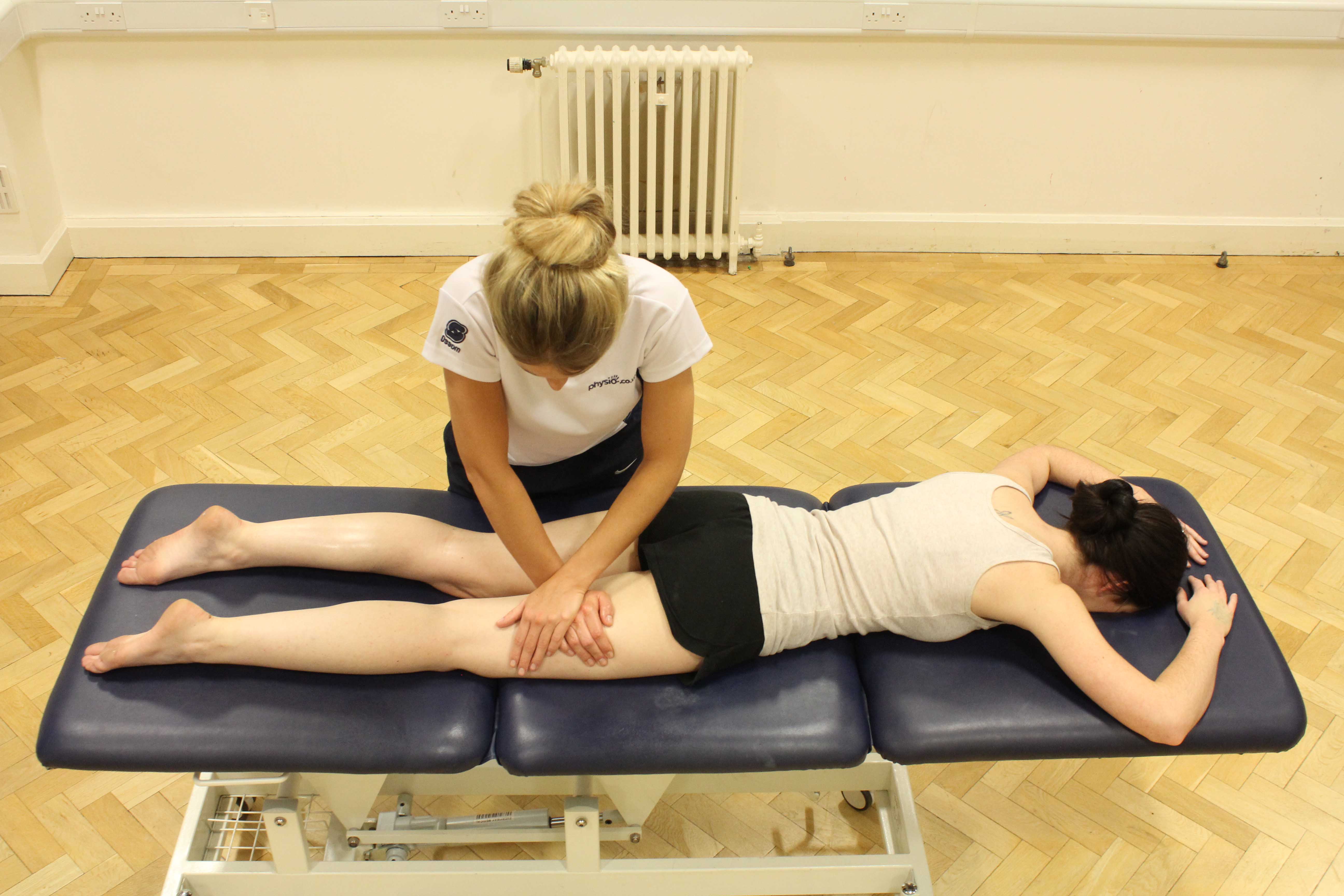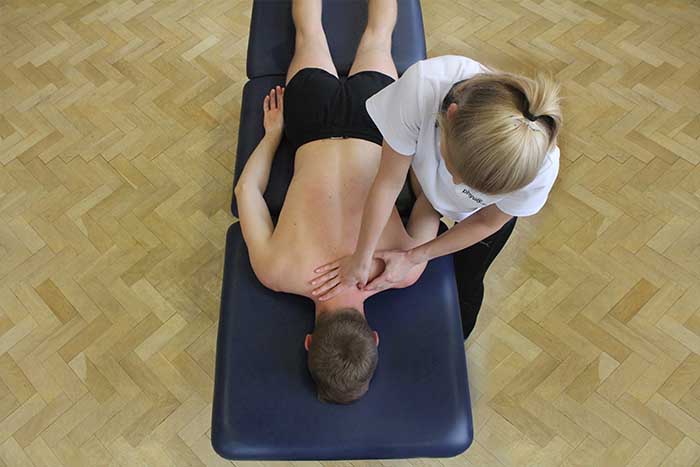Compressions are an effective massage technique. Compressions are used on larger areas of muscle. The compression technique applies pressure onto muscles, it is then held and released. This technique is then repeated. Compressions are used within many different types of massages including Swedish, therapeutic and deep tissue massages. Massage therapists at Physio.co.uk can use compressions as an effective massage technique to treat a range of conditions.
What is compression?
Compression is an effective massage technique performed by laying hands over a muscle area and pushing down onto the tissues. Hands are then lifted and moved to a different area and then repeated. The pressure of compressions can range from light to very deep. Compressions can also be performed with a slight rocking movement that can encourage the parasympathetic nervous system and promote relaxation.
When is compression used?
Compression can be used to help on many circumstances. These circumstances include:
 Above: compression massage technique applied to biceps brachi
Above: compression massage technique applied to biceps brachiCompression is used to help relax the body physically and mentally. Light pressure is applied across the soft tissues increasing temperature and circulation. Increased temperature allows the muscle to soften and lengthen. Compression techniques can also help stimulate the parasympathetic nervous system to aid relaxation. The parasympathetic nervous system encourages relaxation and digestion in the body. When the parasympathetic nervous system is stimulated, hormones such as endorphins, serotonin and dopamine are released. Endorphins, serotonin and dopamine are hormones that produce feelings of calmness, content and happiness.

Compression massage techniques are also used to relieve tightness in the muscles. Compressions can enhance the stretch reflex in the muscles. Pressure applied can stretch the muscle spindle cells and trigger a reflexive contraction. A rhythmic compression technique into the muscles also creates a deep hyperaemia in the tissues. Hyperaemia is the increase of blood flow in the blood vessels. The hyperaemia effect softens the muscle fibers so they can be worked into deeper.
Compression is used to treat acute pains. Compression onto a muscle can help decrease pain by reducing inflammation in the tissues, increasing blood circulation and interrupting pain signal pathways. Inflammation or swelling within the tissues can cause pain. Compression can help flush out excess fluids and relieve pressure. Compression can also encourage pain free movements by eliminating trigger points and relieving tightness.
 Above: compression massage technique applied to thoracic spine
Above: compression massage technique applied to thoracic spineWhat are the physiological effects of compression?
Massage can produce many important physiological effects on the body. The physiological effects of compression include:
 Above: compression massage technique applied to biceps femoris
Above: compression massage technique applied to biceps femorisCompression massage technique increases vasodilation in the blood. Compressions cause a hyperaemia effect which then causes vasodilation. Vasodilation is the widening of blood vessels. The widening of vessels allows more blood to flow through. The increase of blood is beneficial to muscle tissues for healing and nutrition.
Compressions can also stimulate hormones in the body. Compressions cause the muscles and body to relax. When the body relaxes the parasympathetic nervous system is stimulated. The parasympathetic nervous system produces hormones from the brain into the body. Hormones such as endorphins, serotonin and dopamine are produced. Endorphins, serotonin and dopamine help improve mood by producing feel good emotions.
Compression stimulates cellular exchange in the tissues. The compressions technique initially constricts the blood flow and muscle fibers. The slight tightening of the muscles compresses the venous and lymph channels. The force onto the channels can push out waste products and toxins which cause tissue irritation. On release the increase of oxygenated, nutrient rich blood is filtered back into the muscles.

What are the benefits of compression?
Compression has many benefits. The benefits of compression include:
One benefit of compression is relaxation. Compressions are performed onto the muscles and stimulate a feel good factor. Compressions can be performed gently and for prolonged times. This affects the parasympathetic nervous system in the body. The parasympathetic nervous system is able to alter the mood and produce complete relaxation.
Compressions also help improve the circulation in the muscles. Compressions initially restrict the blood flow but then encourage a larger amount of blood to an area. Improved blood circulation in the muscles is beneficial to improving tissue conditions and preparing muscles for activity.
Compressions can help increase healing to damaged tissues. Compressions accelerate the healing process by increasing oxygen and nutrients into the tissues. Oxygen and nutrients can work to repair and heal any damaged cells. Increasing the healing process can help speed up recovery.
Common body parts treated by compression
There are many common body parts that can be treated with compression. Common body parts treated by compression are:
Compression massage techniques can also be performed on other areas of the body and be effective to relax tight muscles and relieve pain.
Summary
Compressions are a manual massage technique that applies direct pressure onto muscles and soft tissues. Compressions are performed by pushing down and holding pressure onto a muscle. Pressure is then released and repeated in a different area. Compressions are used to help relieve tight muscles, decrease pain and promote relaxation. There are many physiological effects that are produced during a compression technique. The physiological effects of compressions are increased vasodilation, increased hormones and increased cellular exchange. Massage therapists at Physio.co.uk can use compressions as an effective massage technique to treat a range of conditions.
How can I arrange a compression massage treatment?
The easiest way to arrange a compression massage treatment at Physio.co.uk is to email us at office@physio.co.uk or call us on 0800 033 7800.
Alternatively if you have any questions please feel free to contact us.
We offer a 7 day service and provide home and clinic appointments.

 0330 088 7800
0330 088 7800


































